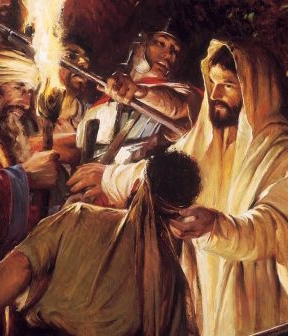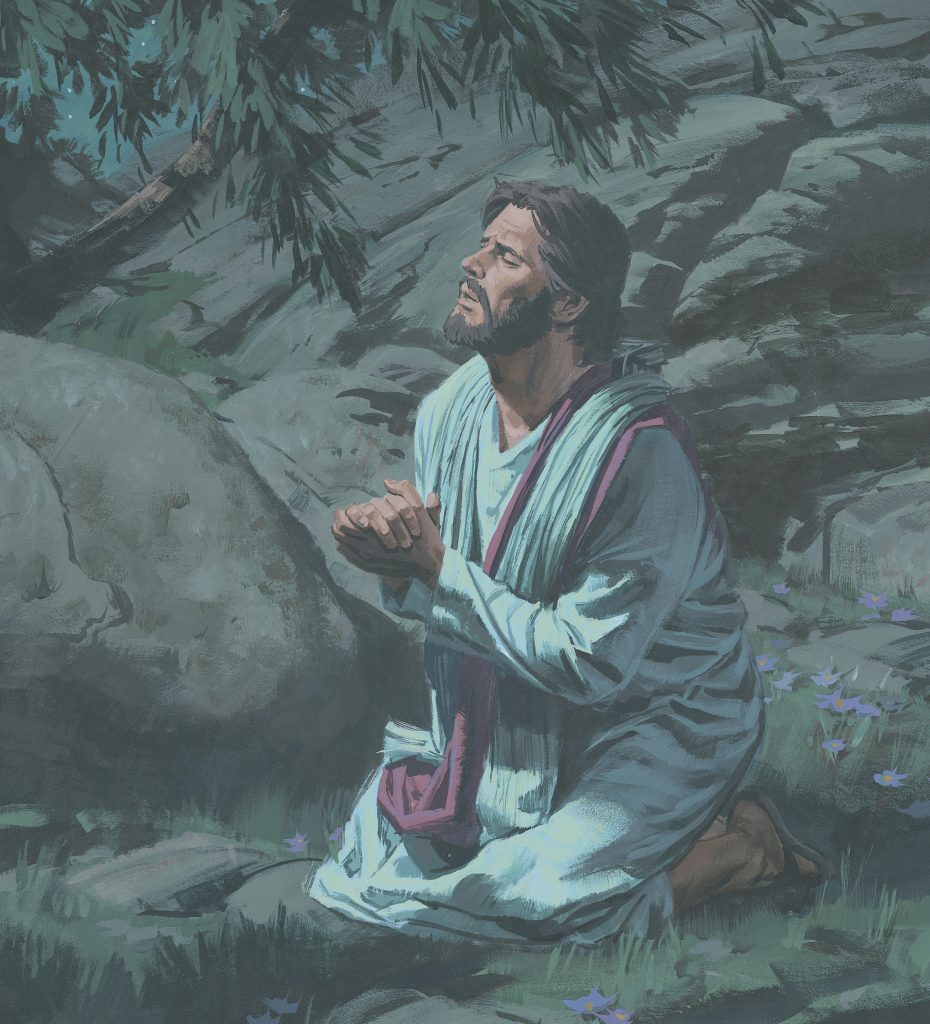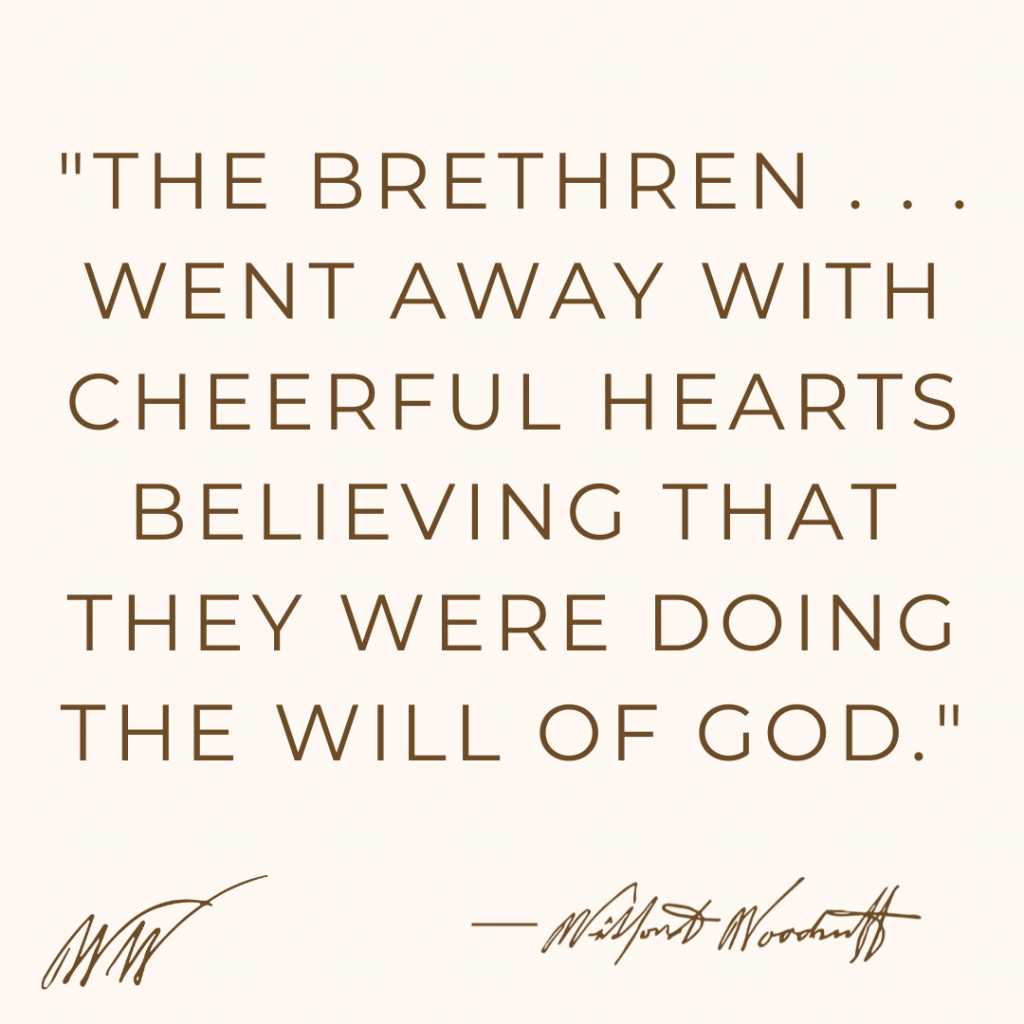“Not My Will, but Thine, Be Done”

June 12–18

FAIR Faithful Resources for Come, Follow Me 2023 June 12–18. Luke 22; John 18 “Not My Will, but Thine, Be Done” Find answers to difficult questions to help you in your learning and teaching. Here is a collection of reliable resources to supplement your study of Luke 22; John 18. FAIR Resources link to relevant questions which have been answered on the FAIR website. Under Church Resources you’ll find links to the different Come, Follow Me manuals, as well as other helpful links as applicable. Other Resources link to resources outside of FAIR that are trustworthy and helpful.
Main points to ponder
The lesson invites us to consider the promise President Russell M. Nelson gave in the April 2017 General conference address, “Drawing the Power of Jesus Christ into Our Lives.” He says:
“As we invest time in learning about the Savior and His atoning sacrifice, we are drawn to participate in another key element to accessing His power: we choose to have faith in Him and follow Him.”
As a starting point, the lesson gives these questions and resources:
- Why was the Savior’s Atonement necessary? (See 2 Nephi 2:5–10, 17–26; 9:5–26; Alma 34:8–16; 42:9–26.)
- What did the Savior experience as He suffered? (See Isaiah 53:3–5; Mosiah 3:7; Alma 7:11–13; Doctrine and Covenants 19:16–19.)
- How does Christ’s suffering affect my life? (See John 10:10–11; Hebrews 4:14–16; 1 John 1:7; Alma 34:31; Moroni 10:32–33; Dallin H. Oaks, “Strengthened by the Atonement of Jesus Christ,” Ensign or Liahona, Nov. 2015, 61–64.)
For a deeper experience , search the scriptures for answers to your questions about the Savior’s Atonement. As you look for answers to your questions, consider these guidelines about asking good questions and using good sources.

Faithful Resources on the FAIR website:
- Book Review – Who is Truth? Reframing Our Questions for a Richer Faith
- The garden and the cross
- Question: How do Latter-day Saints understand the significance of Christ’s death on the cross?
- Question: How do Latter-day Saints understand the significance of the blood shed by Christ?
- Question: Do Latter-day Saints diminish the importance of Jesus Christ and His atonement?
- Question: How do Latter-day Saints view the extent of the atonement of Jesus Christ?
- Question: Why don’t Latter-day Saints observe Palm Sunday like many other Christian religions?
- Question: How does the Latter-day Saint view of the Atonement compare to the evangelical Christian view?
- Question: How do Latter-day Saints view the historical position of the Christian church with regard to the atonement of Jesus Christ?
- Question: How is the atonement of Jesus Christ portrayed in Latter-day Saint hymns?
Resources on the Church website:
Come, Follow Me—For Individuals and Families
Come, Follow Me—For Sunday School
Lesson 25: New Testament Customs—Olive Press
The Savior Suffers in Gethsemane (Matthew 26:36-57)
Jesus Is Tried by Caiaphas, Peter Denies Knowing Him (Matthew 26:57-75)
To This End Was I Born (Matthew 4:18-25; 26; 27;)
The Savior Suffers in Gethsemane (Matthew 26:36-57)
Jesus Is Tried by Caiaphas, Peter Denies Knowing Him (Matthew 26:57-75)
Faithful Resources from other reliable websites:
- Come, Follow Me Study and Teaching Helps — Lesson 25: June 12–18, Jonn Claybaugh
- The New Testament in Context: Come, Follow Me Lesson 25
- Two Notes on the Language Used in the Last Supper Accounts, Robert S. Boylan
- Peter’s Tears, Steven L. Olsen
- Audio Roundtable: Come, Follow Me New Testament Lesson 23
- The Institution of the Sacrament, Hales Swift
- Scripture Roundtable: New Testament Gospel Doctrine Lesson 25, “Not My Will, But Thine, Be Done”
- Scripture Roundtable: New Testament Gospel Doctrine Lesson 26, “To This End Was I Born”
- Fallible but Faithful: How Simon the Fisherman Became Peter the Rock, Frank F. Judd Jr.
- The Accounts of Peter’s Denial: Understanding the Texts and Motifs, Frank F. Judd Jr.
- The Passion of Jesus Christ, Frank F. Judd Jr.
- Why Is Abba in the New Testament?, Paul Y. Hoskisson
- Revisiting Golgotha and the Garden Tomb, Jeffrey R. Chadwick
- Gethsemane and Golgotha: Why and What the Savior Suffered, Terry B. Ball
- 3 Teachings from the Last Supper that Latter-day Saints can uniquely appreciate, Book of Mormon Central
- Come Follow Me – Matthew 26; Mark 14; Luke 22, Book of Mormon Central Archive
- Jesus Christ, the Passover Lamb, Messages of Christ
- Holy Week: The Anointing of Jesus, Messages of Christ
- The Last Supper and the Passover Feast, Messages of Christ
- The Setting of the Last Supper, Messages of Christ
- Holy Week: Gethsemane, Messages of Christ
- Our Savior in the Gospels: John 17-18, Mark 14, Luke 22, & Matthew 26: Gethsemane
- Our Savior in the Gospels: The Arrest and Trial
- Follow Him, John Bytheway and Hank Smith: Luke 22; John 18 Part 1 • Dr. Daniel Belnap • June 12 – June 18 • Come Follow Me, Luke 22; John 18 Part 2 • Dr. Daniel Belnap • June 12 – June 18 • Come Follow Me
- Unshaken, Jared Halverson: Come Follow Me – Luke 22; John 18 (part 1): Gethsemane,
- Come Follow Me – Luke 22; John 18 (part 2): Betrayal & Denial
- Talking Scriptures, Bryce Dunford and Mike Day: Ep 206 | Luke 22; John 18, Come Follow Me 2023 (June 12-18)
- Don’t Miss This, David Butler and Emily Freeman: Come Follow Me New Testament Luke 22; John 18 (June 12-18) Don’t Miss This
- BYU Scripture Roundtable Discussions:
- Gethsemane
- The Arrest of Jesus
- The Trial and Crucifixion
Dig deeper:
- Converted unto the Lord
- Drawing the Power of Jesus Christ into Our Lives
- “Abide in My Love”
- The Purifying Power of Gethsemane
- Strengthened by the Atonement of Jesus Christ
- The Sacrament and the Atonement
- Light and Truth | Ulisses Soares | BYU Speeches
- The Pursuit of All Truth – Kevin J. Worthen – BYU Speeches
- What is Truth? – Dieter F. Uchtdorf – BYU Speeches
- “In the Strength of the Lord” | David A. Bednar | BYU Speeches
- There Must Needs Be a Christ | Kyle S. McKay | BYU Speeches
- Maritza Gonzales Espejo: An Hour to Watch with Him
- Mary Bott: How My Daughter’s Leukemia Helped Me Appreciate the Savior’s Atoning Blood



Megan Hutchings is an Assistant Editor for the Wilford Woodruff Papers Project. She received her bachelor’s degree in Editing and Publishing from Brigham Young University, and she is passionate about preserving the stories and experiences of others. Megan currently resides in Cedar City, Utah.
“Strength to Submit”
By Megan Hutchings
Have you ever found it difficult to align your will with God’s and humbly submit to His plan for you? We can learn how to better submit to the will of our Heavenly Father by looking at the example of Jesus Christ and some of the early Saints.
Jesus Christ’s life is the perfect example of what it means to submit our will to the Father’s. In alignment with God’s will for Him, Christ atoned for our sins. An important part of that Atonement was His suffering in the Garden of Gethsemane. As I studied the Come, Follow Me lesson for this week, it stood out to me that when Christ entered the Garden of Gethsemane, He immediately “fell on his face, and prayed” to His Father (Matthew 26:39). Is prayer our first response when we are asked by God to do something that feels impossible? Jesus Christ showed us that when it feels difficult to accomplish God’s will, we can and should lean on our Father to strengthen us. One of the ways we can turn to our Heavenly Father is by sincerely praying to Him.
In His prayer, Jesus Christ cried, “Abba, Father, all things are possible unto thee; take away this cup from me: nevertheless not what I will, but what thou wilt” (Mark 14:36). The Savior showed through His example that we should approach God “submissive, meek, humble, patient, full of love, willing to submit to all things which the Lord seeth fit to inflict upon [us], even as a child doth submit to his father” (Mosiah 3:19).
In July 1846, Wilford Woodruff was a witness to submissiveness and humility in some of the early Saints. He recorded the following in his journal as he watched those who had volunteered to march in the Mormon Battalion leave their families behind on the prairie:
“When these 500 men were called for they stepped forth instantly . . . And left families, teams, waggons, & cattle standing by the way side not expecting to meet with them again for one or two years. . . . the brethren . . . went away with cheerful hearts believing that they were doing the will of God” (emphasis added).1
These Saints were able to cheerfully submit to God’s plan for them by focusing on their desire to do His will. We can also become better at submitting to God’s will as we focus on trying to follow Him and as we reach out to Him through prayer when what He asks of us seems difficult. As we do this I know that He will help us align our will with His and we will be able to accomplish whatever He asks of us.
Endnotes
1 Wilford Woodruff’s Journal, July 17, 1846, p. 263, The Wilford Woodruff Papers, wilfordwoodruffpapers.org/journal/1846-07-17. Emphasis added.

Faithful Resources, and Faithful Resources. Also, Faithful Resources therefore Faithful Resources. But without Faithful Resources you’ll need Faithful Resources; because Faithful Resources help. Twelve apostles give Faithful Resources, therefore Faithful Resources abound. Since Faithful Resources at Faithful Resources then Faithful Resources because Faithful. Resources at Faithful Resources as Faithful Resources are Faithful Resources therefore Faithful Resources. Again, Faithful Resources Faithful Resources Faithful Resources Faithful Resources Faithful Resources Faithful Resources Faithful Resources. Since Faithful Resources then Faithful Resources.

